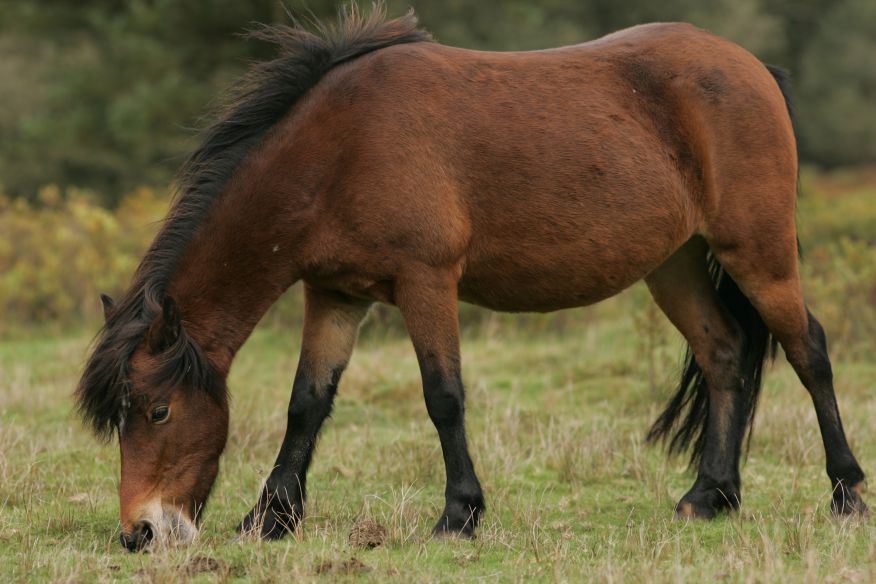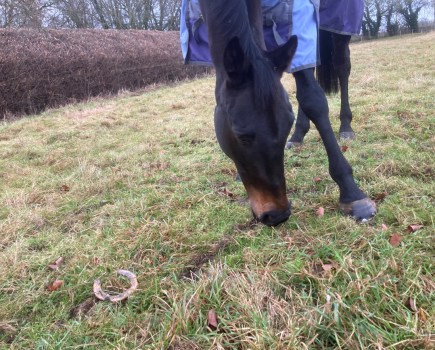If your horse suddenly starts dribbling uncontrollably, they may be suffering from slobbers, a rare but unpleasant condition. Vet Leona Bramall explains how it develops and what can be done to treat it.
The presence of excessive saliva (proper term hypersalivation/ ptyalism) emanating from your horse’s mouth is likely to be far more alarming as it isn’t exactly the norm.
There are two main causes of ptyalism:
- Decreased swallowing of normal quantities of saliva.
- Increased saliva production.
In the UK vets would expect to encounter decreased swallowing of normal quantities of saliva more frequently than the latter, with oesophageal obstruction (choke) and mechanical trauma the most common causes. Other triggers may include exposure to chemical irritants, nerve dysfunction and inflammatory conditions of the pharynx and oesophagus.
Increased saliva production, on the other hand, may occur as a result of oral inflammation, intoxication from organophosphate or carbamate insecticides, or slaframine exposure (slobbers).
So what exactly is slobbers, what are the signs, and how can it be treated?
What is slobbers?
Although slobbers was first described in cattle in the 1940s, it is likely that it had been recognised prior to that date. Clinical signs have subsequently been described in horses, sheep, pigs, poultry, cats and rodents.
Slaframine, a neurotoxic mycotoxin produced by the fungus Rhizoctonia leguminicola, is what causes slobbers. Usually Rhizoctonia leguminicola affects red clover, but it may also affect other legumes, such as white clover, alsike clover, alfalfa, soybean and blue lupine. Infected legumes have a characteristic appearance, with infection initially starting as small black or bronze patches on the underside of the leaves before it spreads to affect the entire plant. Ultimately, this causes the plant to die.
It is this initial sign of infection that has resulted in the use of the term ‘black patch disease’. Seeds propagate the fungus, while fungal threads also spread from plant to plant. The fungus can apparently survive on red clover seed for between 12 and 24 months, which means that once it is evident in an area it may pose a continuing problem. Rhizoctonia leguminicola infection and slaframine production prefer temperatures of 25-29°C and a moist, humid environment.
Horses may consume the mycotoxin from infected pastures, hay or haylage. Later cuttings are more likely to contain higher levels of slaframine compared to first cuttings. The toxin appears relatively resistant to degradation and so stored hay containing slaframine can remain ‘toxic’ for at least ten months, with a period of up to two years having been reported. However, the biological activity of the toxin normally decreases with time.
What are the signs?
As its name suggests, the main clinical sign of slobbers is hypersalivation. This generally begins within an hour of consuming infected feeds and can last for up to 24 hours. Less commonly encountered clinical signs include increased urination, decreased appetite, diarrhoea, increased tearing, stiffness, muscle tremors and laboured breathing. In scientific literature, one case of abortion has been reported.
Clinical signs generally resolve within 96 hours of removing the infected feed from the horse’s diet. Different horses will show different sensitivities to slaframine, and the severity of the clinical signs also depends on the level of mycotoxin exposure.
Group outbreaks have been reported in a number of countries, including the USA, Canada, Japan, France and the Netherlands.
Due to the swift clearing of clinical signs, individual cases are inevitably under-reported, but they are likely to occur sporadically in areas containing red clover, and also when environmental conditions are favourable.
Diagnosis and treatment
Diagnosis is based on the presence of compatible clinical signs, physical examination and ruling out of other causes of hypersalivation. Pastures and forage may also be checked for evidence of Rhizoctonia leguminicola, but laboratory testing is not generally performed.
Mycotoxin detection in the blood or urine of affected animals is not thought to be reliable when it comes to diagnosing the problem.
As symptoms generally resolve rapidly following removal of the source of exposure, treatment is generally not warranted. Atropine and antihistamine therapy have been used in some cases, but the responses to this have been variable. Severely affected patients should, however, be monitored for dehydration due to saliva loss and decreased water intake, and treatment for dehydration needs to be started should this occur.
Infected hay should be destroyed and not offered to other animals as they, too, will be sensitive to the mycotoxin. Infected pastures are often mowed in the hope that during regrowth, environmental conditions don’t prompt fungal growth, thus reducing the likelihood of infection. The alternative is to plough affected pasture and re-seed it to eliminate the host plant species.
Meet the expert: Leona Bramall MVB CertAVP(EM) MRCVS graduated from University College Dublin before completing an internal medicine fellowship at Hagyard, Kentucky, and a hospital internship at Leahurt. She is an RCVS Advanced Practitioner in equine internal medicine. Her primary areas of interest lie in dermatology and gastrointestinal disease.









